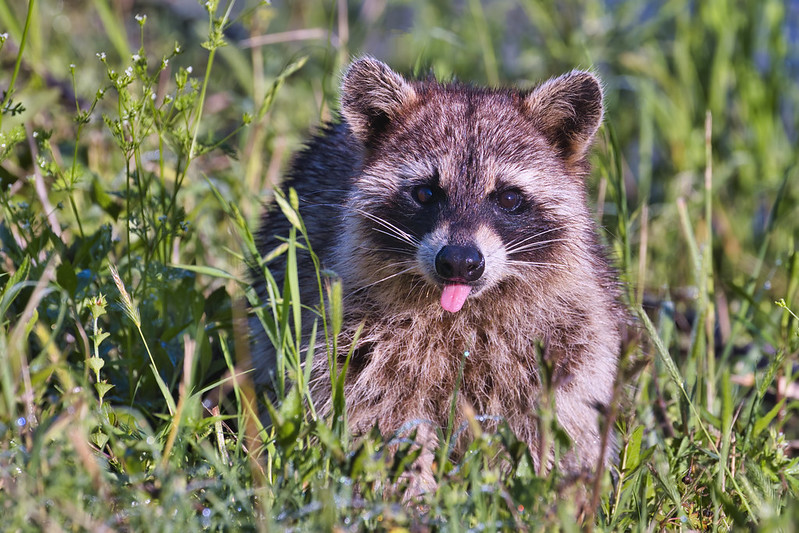As I was driving through the Sequoyah National Wildlife Refuge in Oklahoma, I spotted a raccoon enjoying its meal of a carp by the side of the auto tour road. It was quite a sight to see the raccoon savoring the carp like it was a gourmet meal, with its tongue out. I only wished I had witnessed the battle between the two.

Raccoons are opportunistic omnivores, which means they will eat anything they can get their hands on. Their diet consists of fruits, nuts, berries, insects, small mammals, and even carrion. They have strong and nimble front paws that they use to grab and manipulate their food, and they can even open containers and doors.
Raccoons are known to wash their food in water before eating it, and although some people believe they do it to clean their food, scientists suggest that it helps soften and manipulate their food before eating it. In the fall, raccoons eat as much as they can to store fat reserves before winter. During the winter months, they go into a deep sleep called torpor, which helps them conserve energy and survive the cold.
Raccoons are intelligent and adaptable creatures that can quickly learn to eat new foods and exploit new food sources. In some urban areas, they have learned to raid trash cans and compost bins for food, leading to conflicts with humans.
